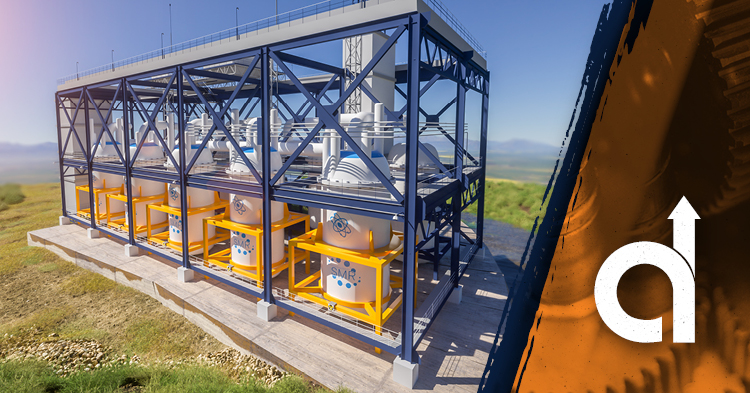The Rise of SMRs and Their Unique Lifting Challenges
As Small Modular Reactors (SMRs) gain momentum as a scalable, clean-energy solution, their unique demands are becoming clearer—especially when it comes to lifting and material handling. Engineers and contractors play a pivotal role in SMR deployment, but even the most advanced design can fall short without proper planning for how these heavy, sensitive, and precisely engineered modules will be installed and maintained.
Tight Spaces, Heavy Loads, and No Room for Error
While SMRs offer clear advantages—modular construction, reduced on-site labor, and improved safety profiles—they also introduce a distinct set of lifting challenges. These reactors are factory-built and shipped in large, preassembled sections that often weigh more than expected. Once on-site, these massive components must be maneuvered in tight quarters, often within inches of structural walls or other modules. Precision is non-negotiable; even a slight misalignment can jeopardize structural integrity or cause major delays.
Beyond Installation: The Long-Term Role of Lifting Systems
SMR projects also involve lifting delicate and sometimes radioactive materials, which must be handled with exceptional care. Contractors must ensure not just lifting power, but consistency and control, all while navigating nuclear-grade regulatory requirements such as ASME NQA-1. It’s not enough to complete the initial installation—these lifting systems must also serve critical long-term functions like refueling, maintenance, and inspection.
Why Standard Cranes Don’t Make the Cut
Standard lifting equipment often falls short of these needs. Traditional cranes may lack low-headroom configurations, advanced control systems, and the seismic or radiation-resistance required for SMR environments. Relying on off-the-shelf solutions can result in costly retrofits or compromise both safety and compliance.
Tailored Solutions for Complex Needs
Successful SMR projects benefit from custom-engineered lifting solutions. Overhead bridge cranes are particularly well-suited to indoor reactor halls, offering high capacity lifting with smooth, controlled operation. When space is limited or flexibility is key, gantry cranes provide the mobility to lift and position modules in complex or temporary environments. Custom-engineered below-the-hook devices ensure that every lift fits the specific geometry, weight, and load distribution of SMR components. Increasingly, remote-operated and automated crane systems are being integrated to reduce human exposure and enhance lift precision.
Partnering for Success
Choosing the right lifting partner is just as important as selecting the right equipment. It’s critical to work with manufacturers who, like ACECO, understand the nuclear industry, can meet stringent regulatory demands, and offer lifecycle support beyond installation. Look for a partner with in-house engineering and fabrication capabilities, ASME NQA-1 certification, and a track record of success in both modular construction and nuclear-grade applications. Lucky for you, ACCECO meets all of those requirements!
Lifting the Future of Energy
Ultimately, lifting should never be an afterthought in SMR deployment. By involving crane experts early in the design process, project teams can avoid surprises, streamline timelines, and improve safety and compliance. Specialized lifting solutions are more than just tools—they’re strategic assets that help bring the future of energy to life.
Need help planning your next SMR lift? Contact American Crane and Equipment Corp. to learn how we can support your modular energy project with custom-engineered lifting solutions built for precision and performance.


